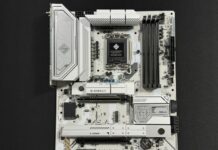Won't Break The Bank!
Review Summary
The MSI MAG B650 Tomahawk WiFi motherboard delivers robust performance at an affordable price of $213.18, making it a great value for budget-conscious users. The motherboard features comprehensive USB connectivity with 23 ports, including a USB 3.2 Gen2x2 Type-C. The cooling solutions, including extended heatsinks and thermal pads, also performed impressively well in all my tests. Overall, I recommend it to anyone looking for a bang-for-the-buck B650 motherboard.
Hours Tested: 13
Overall
-
Design - 8.5/10
8.5/10
-
Features - 9/10
9/10
-
Performance - 9/10
9/10
-
Value - 8.5/10
8.5/10
Pros
- 14+2+1 Power Phases
- Good VRM Cooling
- 3x Gen4 M.2 Ports
- 2x PCIe Gen4 x 16 slots
- 6x SATA Ports
- 1x USB 3.2 Gen2x2 20Gbps Type-C Port
- 5GbE LAN Port
- WiFi 6E Module and Antennae
- Audio ALC4080 Codec
- Clear CMOS Button
- Flash BIOS Button
Cons
- No Gen5 Connectivity
- No Debug LED
- PCI_E3 shares bandwidth with M2_3 port.
I am on a streak of covering MSI’s AM5 platform motherboards before the next generation is out. So far, I have tested MEG X670E ACE and MPG X670E Carbon WiFi. This time, I am testing the B650 chipset in the form of MSI MAG B650 Tomahawk WiFi.
Key Takeaway
- The MSI MAG B650 Tomahawk WiFi offers a good performance in its price range, making it a solid value option. The board even includes a USB 3.2 Gen2x2 Type-C Port.
- You should buy the MSI MAG B650 Tomahawk WiFi if you want good VRM performance with efficient cooling, plenty of USB ports, and great value for your money.
- You should not buy the MSI MAG B650 Tomahawk WiFi if you are after Gen5 connectivity, as neither the PCIe nor the M.2 slot runs at Gen5.
The salient features include:
- This motherboard has support for AMD Ryzen™ 9000 / 7000 Series Desktop Processors
- The memory support is up to 7600+(OC) MHz DDR5
- The cooling solution comprises an extended Heatsink Design and M.2 Shield Frozr
- The motherboard has 2.5G LAN and AMD Wi-Fi 6E Solution
- It has Gen4 M.2 ports.
- There is a USB 3.2 Gen 2×2 port, offers 20Gbps transmission speed
- AUDIO BOOST 5
The salient specifications include:
| CPU Support | AMD Ryzen 9000 and 7000 series desktop CPUs |
| Memory Support | 4xDIMM Slots for DDR5 up to 7600MHz+ (OC) |
| Display Interface | Support 4K@60Hz as specified in HDMI 2.1, DisplayPort 1.4, – Requires Processor Graphics |
| PCIe Slots | 2x PCIe Gen4 x16 slots, 1x PCIe Gen3 x1 slot |
| M.2 Ports | 3x M.2 Gen4 Ports |
| SATA Ports | 6x |
| Audio | RealTek ALC4080 |
| Network | 2.5G LAN port and wireless connectivity using WiFi 6E/BT |
| USB Ports | Total 23x USB Ports (Front and Rear), including a USB 3.2 Gen2x2 Type-C |
| Size | 304.8×243.84mm, ATX Form Factor |
How Is MAG B650 Tomahawk WiFi Different?
The MSI MAG B650 Tomahawk WiFi packs a nice bag of features at a pocket-friendly price. ASRock makes it difficult for this motherboard in this price range by giving us some better options. There is no Gen5 connectivity on this motherboard. It has an adequate power delivery design with effective cooling.
If you are aiming for a budget-friendly motherboard from the Red Camp, this board should be among the potential candidates.
Packaging And Unboxing

The motherboard is shipped inside a standard cardboard packing box. MSI has included the following in the box:
- 1x ATX Motherboard
- 1x Wi-Fi Antenna
- EZ M.2 Clips
- 1x SATA 6Gbps Cables
- 1x Quick Installation Guide
- 1x European Union Regulatory Notice
- 1x Cable Sticker
Design Overview

This motherboard uses AMD AM5 socket that supports AMD Ryzen 9000 and 7000 CPUs. Since different SKUs have different level of support for PCIe, refer to user manual for more details. It has 4x DIMM slots. The motherboard has 6 PCB layers using IT-150GS PCB material and 2oz Thickened Copper.
The on-board display coming from socket includes HDMI 2.1 and DisplayPort 1.4 capable of 4K@60Hz. In addition this socket provides 20x PCIe lanes.
Two M.2 ports are wired to the CPU socket. Top port supports 22110 form factor. Third slot is wired to the chipset. The third slot can only operate on x2 with Ryzen 5 8500G. M2_3 and PCI_E2 share bandwidth. They both will operate on x2 if populated at same time.
Power Delivery To Socket
MSI is using AMD AM5 platform (LGA 1718). This socket supports the AMD Ryzen 7000 series CPUs and Ryzen 9000 series of desktop CPUs. You need to update the BIOS for Ryzen 9000 series CPUs.

MSI has used two extended VRM heatsink covers along with a heat pipe ensuring a maximum cooling provision for the power phases. The thermal pads are rated for 7W/mK to ensure effective heat transfer.
This motherboard has a simple layout with a black theme. There is no backlit MSI logo on the heatsink cover.
The MSI MAG B650 Tomahawk WiFi features an adequate delivery circuit using a 14+2+1 phase VRM configuration. MSI has named it DUET meaning that every two stages will get the same PWM signal from the controller. The main driving force is SPS MPS2326 PWM controller.
The 14 VCore phases are MPS2342. There are 2 phases for the SOC and 1 phase for the Misc.
DIMM Slots
MSI has used 4x DDR5 UDIMM slots. MSI has used the SMT welding process to install slots on the PCB for better performance. A total of 192GB capacity is supported along with a support for binary as well as non-binary memory kits. The maximum supported DDR5 frequency is 7600+(OC) MHz.

This motherboard supports AMD EXPO as well as Intel XMP with dual-channel and dual-controller modes. The supported memory is non-ECC and unbuffered.
Storage Options
This motherboard has 4x M.2 slots and 6x SATA ports. Two M.2 ports have aluminum heatsink labeled 1 and 2. Third port does not have a cover. EZ M.2 Clips makes it easier to install the SSD.
I am showing the M.2 ports with their covers. As you can see third port does not have a cover.
I have removed the heatsink covers and showing the M.2 ports. There is no second thermal pad on any of these ports. This is understandable since this is a budget oriented motherboard.
Both heatsink covers have thermal pads. The top slot has 22110 form factor support. All three are Key M type. Speaking of SATA ports, this motherboard has a total of 6x ports. Four ports are wired to the chipset; two are wired to the ASM1061.
PCIe Connectivity
This motherboard has a total of 3x PCIe slots. The top two slots are Gen4 x16, and the third is Gen3 x1. For Ryzen 7000 series CPUs, the configuration of these slots will be x16/x2. This configuration is x8/x2 for Ryzen 7 8700G and Ryzen 5 8600G. The Ryzen 5 8500G supports x4/x2.

PCI_E1 is steel-reinforced and wired to the CPU socket. the other two slots are wired to the chipset. MSI calls the steel reinforcement as Steel Armor and it has heavy soldered connections on the PCB to support the weight of heavy graphics card. MSI has used the advanced SMT technology for the PCIE slot to diminish interference and electrical noise.
USB Connectivity
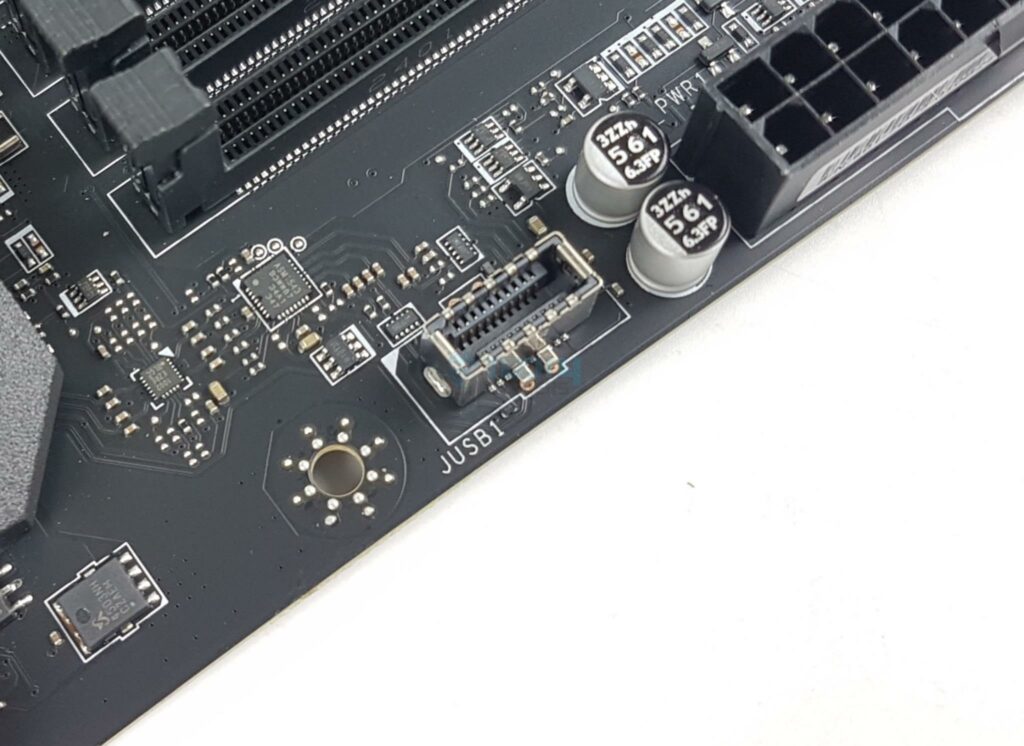
This motherboard is packed with USB ports on the front, rear, and mid-board. It has:
- 2x USB 2.0 (Rear)
- 4x USB 2.0 (Front)
- 2x USB 2.0 ports (Rear)
- 4x USB 2.0 ports (Front)
- 4x USB 5Gbps Type A (Rear)
- 2x USB 5Gbps Type A (Front)
- 3x USB 10Gbps Type A (Rear)
- 1x USB 10Gbps Type C (Front)
- 1x USB 20Gbps Type C (Rear)
AMD platform is known for its generous support for the USB connections and this motherboard is no exception to that. This motherboard has only one USB3.2 Gen2x2 20Gbps port which is on the rear panel (wise decision).
MSI has used multiple controllers on this motherboard, including ITE IT66318FN, ASM1074, ASM1543, P12DPX, PI3EQX10, PI3EQX16, PI3HDX, GL805, GL9905, and PI3EQX2. The main IO controller is nuvoTon NCT6687D-R.
Networking Solution

This motherboard has a 2.5GbE LAN port on the rear panel driven by RealTek RTL8125BG LAN controller. The wireless connectivity comprises WiFi 6E and Bluetooth 5.3 driven by nuvoTon NUC1261NE4AE. The module is installed in the M.2 Key-E slot on the rear panel.
The antenna is magnetic, which makes its placement convenient. The WiFi 6E supports MU-MIMO TX/RX and 20MHz, 40MHz, 80MHz, and 160MHz bandwidth in 2.4GHz/5GHz. It supports 802.11 a/b/n/g/ac/ax.
Audio Solution
MSI has implemented Audio hardware on two separate layers of the PCB. They have used RealTek ALC4080 codec in combination with high-performance Chemi-Con capacitors.

This is a 7.1 Channel audio solution that has S/PDIF output as well. It supports up to 32-Bit/384 kHz playback on front panel. MSI has designed the isolated analogy structure for the output on the rear panel.
Chipset

I am showing the B650E chipset after removing its heatsink cover.
The above pictures show the chipset covers from both sides.
Internal Connectors
There are:
- 1x 24-pin Power Connector (ATX_PWR)
- 2x Power Connector EPS (CPU_PWR)
- 1x CPU Fan Header
- 1x Pump Fan Header
- 6x System Fan Headers
- 2x Front Panel (JFP) Connector
- 1x Chassis Intrusion (JCI)
- 1x Front Audio (JAUD) Port
- 1x Thermal Sensor connectors (T_SEN)
- 1x Tuning Controller connector (JDASH)
- 2x RGB LED connector(JRGB)
- 1x TPM pin header (Support TPM 2.0)
- 4x USB 2.0 ports
- 2x USB 5Gbps Type A ports
- 1x USB 10Gbps Type C port
- 4x EZ Debug LED
Each fan header is powered and controlled by nuvoTon 3947S. The Pump and CPU Fan headers are rated for 3A, whereas the system fan headers are rated for 2A each.
Rear IO Panel

There are:
- DisplayPort 1.4
- 5G LAN Port
- USB 2.0 Port
- USB 3.2 Gen 1 5Gbps Type-A
- Wi-Fi / Bluetooth Antenna
- HD Audio Connectors
- Flash BIOS Button
- HDMI™ 2.1 Port
- USB 3.2 Gen 2 10Gbps Type-A
- USB 3.2 Gen 2×2 20Gbps Type-C
- Optical S/PDIF OUT
The above picture shows the backside of the motherboard. MSI is using a winband 25Q256JWEQ 256M-bit Serial Flash Memory (BIOS Chip) with uniform 4KB sectors and Dual/Quad SPI.
BIOS
BIOS has the same interface that I saw on MEG X670E ACE and MPG X670E Carbon WiFi, which have similar layouts. EXPO/XMP is just one click away. CPU, RAM, and Voltage settings are grouped under the OC menu. System-related configuration options are grouped in the Settings menu. Boot and Exit options are also under the Settings menu.
You can use PBO settings under AMD Overclocking. You will find predefined profiles as well related to the thermal limit, socket power limit etc. Clicking on Advanced will give you total control to define your own PBO profile.
For the software overview, you can check our Z790 Tomahawk Max WiFi motherboard review.
Test Build

I have used the following configuration to test the motherboard:
- MSI MAG B650 Tomahawk WiFi
- MSI GeForce RTX 3090 Gaming X Trio 24G
- AMD Ryzen 7 7700X [Stock, Auto]
- EK-Nucleus AIO CR360 D-RGB
- XPG Lancer RGB 32GB 6000MHz DDR5 kit
- Western Digital SN850 Black 500GB NVMe SSD [For OS]
- Sabrent Rocket 4 Plus 4TB Gen4x4 NVMe SSD [For Games]
- Sabrent Rocket NANO V2 4TB Portable SSD
- Fractal Design ION+ 2P 860W Platinum
- Praxis Wetbench
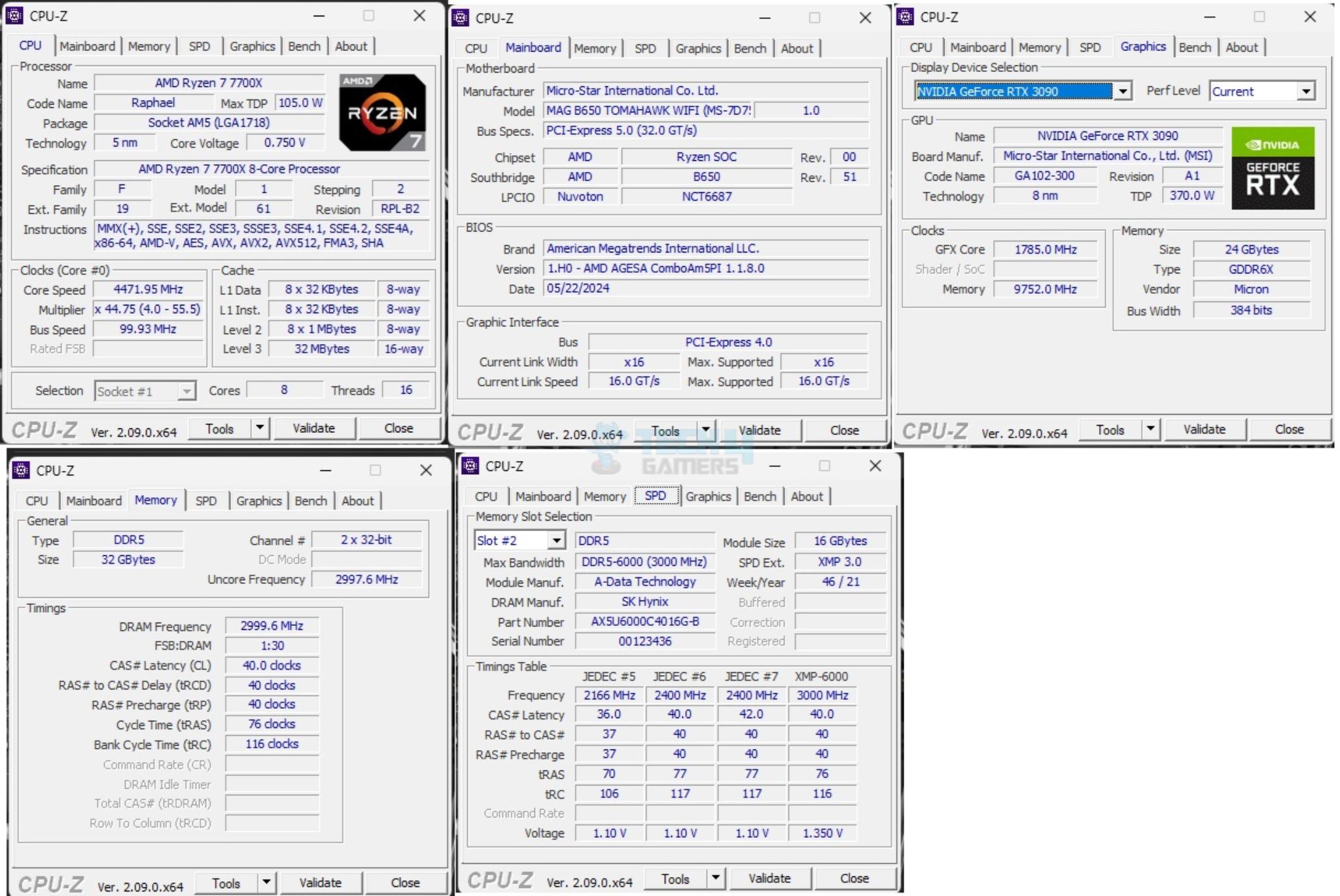
The above is a picture showing a run of CPU-Z. You can see that graphics card is operating at x16 link. The RAM is operating at its tested speed of 6000MT/s after loading the XMP. Finally, I have a MSI motherboard which is showing the SPD timing of the memory modules.
We have divided the overall tests in four major categories. These are:
- CPU and Memory Tests
- Storage Tests
- Gaming Tests
- Overall System Tests
Test Result
The testing was done on stock settings with XMP loaded. This motherboard has powers unlocked by default.
CPU And Memory Benchmarks
In Cinebench R23.2, the CPU scored 19938 points in CPU Multi Core load and 1999 points in a Single Core Load. The DDR5 kit has performed well at its tested speed of 6000MHz. The single core score of 2156 from Gekbench 5.4.5 is quite well. The performance in the 7-Zip benchmark is satisfactory as well, with a compression result of 90958MIPS and 86479MIPS score in Decompression. The blender benchmark overall score was 284.87.
Storage Test
I have used:
- Gen4x4 NVMe Drive
- USB 3.2 Gen2x2 Type-C Drive [Rated for 1600MB/s]
Both drives passed their sequential speeds in the CrystalDiskMark. The performance in PCMARK10 Data Drive Benchmark is quite well. The Gen4x4 NVMe drive scored 3459 and USB drive scored 622 score. These scores are low compared to Intel which is a platform limitation.
Gaming Test
This motherboard can easily handle the gaming load without a hitch.
System Performance Test
The PCMARK10 score came to 10007, an excellent score, and the Performance Test overall score was 11020.
Core Clock Behavior
I have Balanced Power profile in Windows Environment. To record the idle temperatures, the system was put on idle for 10 minutes. The idle clocks were around 2400MHz. The cores boosted to 5.5GHz under 1T load using R23.2 whereas these cores boosted to 5.375GHz under all cores load. These figures confirm the Intel’s clock ratings for AMD Ryzen 7 7700X.
Thermals And Power
The CPU Package power draw was 144.434W on all cores load using Cinebench R23.2. The Graphics card under full stress test load was doing 376W.
Testing was done on an ambient temperature of 28ᵒC. the CPU was idling at 40.3ᵒC and the graphics card was idling at 35ᵒC. Under load, the CPU was doing 95.5ᵒC whereas the GPU was doing 83ᵒC.

The VRM/MOSFET was doing 59.7ᵒC at an ambient of 28.2ᵒC. This is a good performance from the VRM cooling solution.
Should You Buy It?
Buy It If
✅You are on a budget and looking for a decent motherboard: MSI MAG B650 Tomahawk WiFi retails at USD 213.18. It has got a decent bag of features that would cover you for good.
✅You need more USB connections: MSI MAG B650 Tomahawk WiFi packs 23 USB connections, including a USB 3.2 Gen2x2 Type-C port.
✅You prefer good VRM cooling: MSI has provided a good cooling solution for the power delivery circuit.
Don’t Buy It If
❌You require Gen5 Connectivity: This motherboard does not have a Gen5 connection for PCIe or M.2. Skip it if those are your requirements.
My Thoughts
This is my third AMD AM5 motherboard back-to-back from MSI. I have tested the MEG X670E ACE and MPG X670E Carbon WiFi motherboards earlier. This time, it is MAG B650 Tomahawk WiFi. This motherboard covers the upper budget and entry of mid-range segments in the market.
This motherboard packs 14+2+1 power phases (DUETS) with enlarged heat sinks that use a heat pipe and 7W/mK thermal pads. MSI has integrated sensors to report temperature and power values from two different rails. There is over-current and over-voltage protection as well. The BIOS interface is the same as I have seen on other MSI motherboards.
This motherboard does not have a Gen5 connectivity. Keep that in mind if those are your requirements. This motherboard has a total of 3x PCIe slots. Two are PCIe Gen4 x16, and the third is PCIe Gen3 x1. The top slot is wired to the CPU socket, whereas the other two are wired to the chipset. PCI_E3 shares bandwidth with the M2_3. Both will operate at x2 speed if used together.
There are three Gen4 M.2 ports. The top port supports 22110 form factor. All three are Key M. Only two have thermal pads. There is no thermal pad on base of these ports. The top port is wired to the socket whereas the other two are wired to the chipset. This motherboard has a total of 6 SATA 6G ports. 4x are wired to the chipset and two are driven by ASMedia ASM1061 controller.
The board can house up to 192GB memory with up to 7600+(OC) MHz frequency. Speaking of USB connectivity, this board has a strong game with a total of 23 USB ports, including a USB 3.2 Gen2x2 20Gbps port on the rear panel.
This motherboard retails at USD 213.18 and comes with a 3-year warranty. It has a solid performance and offers a tough competition to the MPG X670E Carbon WiFi since I used same CPU on these motherboards.
Community Poll
Thank you! Please share your positive feedback. 🔋
How could we improve this post? Please Help us. 😔
[Reviews Specialist]
Usman Saleem brings 8+ years of comprehensive PC hardware expertise to the table. His journey in the tech world has involved in-depth tech analysis and insightful PC hardware reviews, perfecting over 6+ years of dedicated work. Usman’s commitment to staying authentic and relevant in the field is underscored by many professional certifications, including a recent one in Google IT Support Specialization.
8+ years of specialized PC hardware coverage
6+ years of in-depth PC hardware analysis and reviews
Lead PC hardware expert across multiple tech journalism platforms
Certified in Google IT Support Specialization
Get In Touch: usman@tech4gamers.com


 Threads
Threads










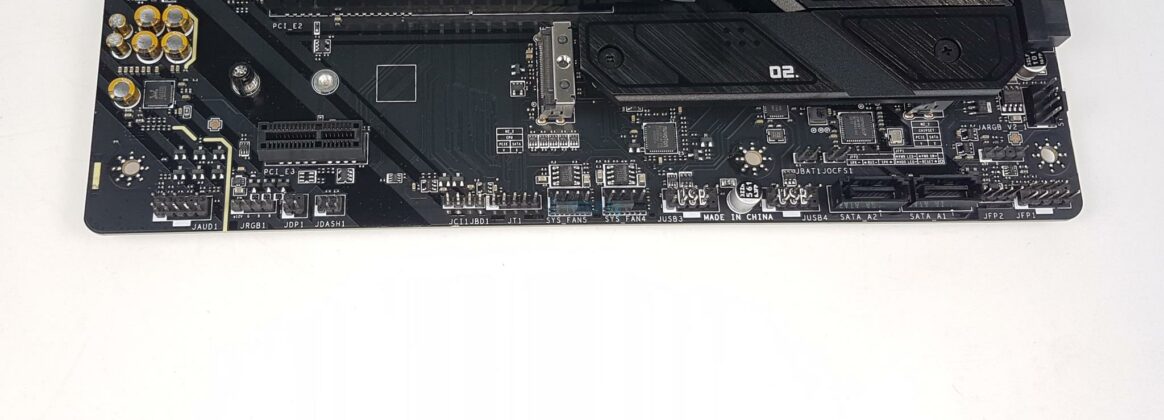
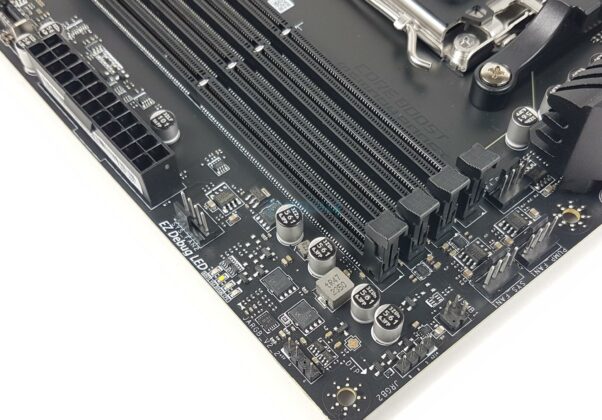





















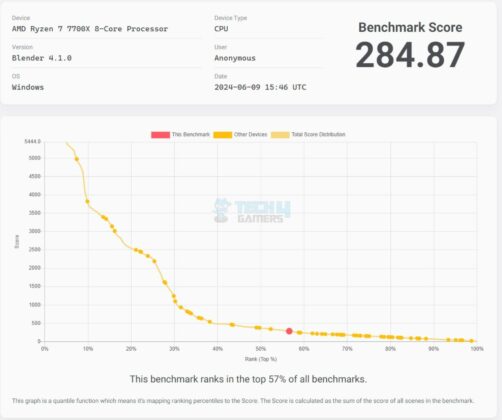











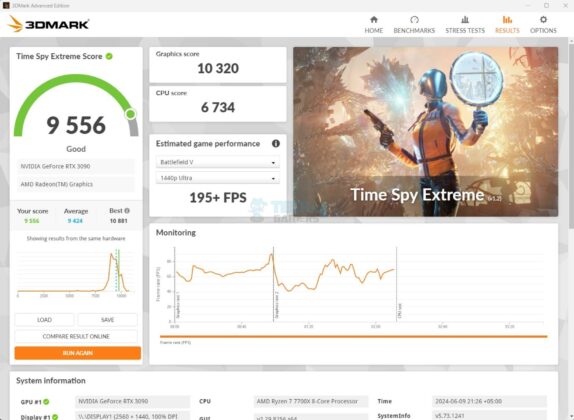






![These Are The Best Motherboards For i7-14700KF [After Testing] Best Motherboard For i7-14700KF](https://tech4gamers.com/wp-content/uploads/2023/10/Best-Motherboard-For-i7-14700KF-218x150.jpg)
![BEST Motherboards For i5-13600K [Updated] Best Motherboards For Core i5-13600K In 2022](https://tech4gamers.com/wp-content/uploads/2022/11/Best-Motherboards-For-Core-i5-13600K--218x150.jpg)

![The Best Motherboards For Ryzen 5 9600X In 2025 [With Benchmarks] Best Motherboards For Ryzen 5 9600X](https://tech4gamers.com/wp-content/uploads/2024/07/Best-Motherboards-For-Ryzen-5-9600X-218x150.jpg)
